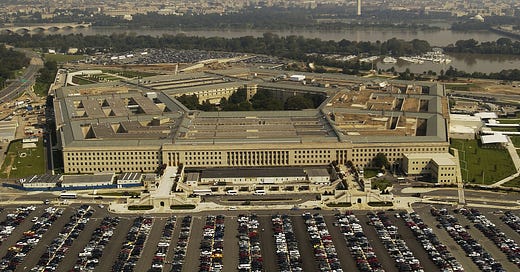Beyond the Battlefield: The Far-Reaching Impact of the Military Industrial Complex
The Military Industrial Complex (MIC) is a term used to describe the relationship between a country's military and the defense industry that supplies it. The term was popularized by President Dwight D. Eisenhower in his farewell address to the nation on January 17, 1961. Eisenhower warned the American people about the "conjunction of an immense military establishment and a large arms industry" that had emerged in the post-World War II era. He argued that this complex had the potential to "endanger our liberties or democratic processes" if left unchecked.
The roots of the Military Industrial Complex can be traced back to the early days of the United States' involvement in World War II. In order to rapidly expand its military capabilities, the government entered into partnerships with private defense contractors to produce weapons, equipment, and other supplies for the war effort. This partnership continued after the war ended, as the Cold War led to a sustained demand for military goods and services.
During the 1950s, the defense industry became a major economic force in the United States. Companies like Boeing, Lockheed, and General Dynamics became household names, and the government began to rely heavily on their expertise and resources to develop new weapons and technology. The Pentagon's budget grew rapidly, and defense spending became a key driver of economic growth.
As the Military Industrial Complex continued to grow, critics began to raise concerns about its impact on American society. Some argued that the relationship between the military and the defense industry had become too cozy, and that the government was spending too much money on defense at the expense of other priorities like education, healthcare, and infrastructure.
Others pointed out that the MIC had created a powerful lobbying force in Washington, D.C. Defense contractors spent millions of dollars each year to influence lawmakers and shape public opinion in favor of increased military spending. Some even argued that this lobbying had helped create a culture of militarism in the United States, where war was seen as a solution to a wide range of problems.
Despite these concerns, the Military Industrial Complex continued to thrive in the decades that followed. The end of the Cold War in 1991 led some to predict that defense spending would decline, but this did not happen. Instead, the United States became embroiled in a series of conflicts in the Middle East, and defense spending continued to rise.
Today, the United States spends more on defense than any other country in the world. In 2020, the Pentagon's budget was $738 billion, accounting for nearly 40% of global military spending. This spending has fueled the growth of the defense industry, which now employs millions of people across the country.
So, what are the dangers of the Military Industrial Complex? There are several.
First, some argue that the MIC has created a "war culture" in the United States, where conflict is seen as a solution to a wide range of problems. This can lead to a situation where military solutions are pursued even when they are not the best option, leading to unnecessary conflicts and loss of life.
Second, the MIC has created a powerful lobbying force in Washington, D.C. Defense contractors spend millions of dollars each year to influence lawmakers and shape public opinion in favor of increased military spending. This can lead to a situation where the needs of the defense industry are prioritized over the needs of the American people, leading to a misallocation of resources and a failure to address urgent social and economic problems.
Third, the MIC has created a situation where the military has become too powerful and too influential in American society. This can lead to a situation where the military is seen as above criticism, and where dissent is seen as unpatriotic. This can lead to a situation where the military is used to suppress dissent and maintain the status quo, rather than to defend the country from external threats.
Fourth, the MIC has created a situation where the defense industry has become a major economic force in the United States. This can lead to a situation where the government prioritizes defense spending over other economic priorities, leading to a misallocation of resources and a failure to address urgent social and economic problems.
The dangers of the Military Industrial Complex are not limited to the political and economic sphere, but also extend to society at large. One way that the MIC trickles down to society is through the normalization of militarism and the glorification of war. This can be seen in popular culture, where films and video games often depict the military as heroic and virtuous, and in the media, where the military is often portrayed as the solution to a wide range of problems.
Another way that the MIC trickles down to society is through the militarization of law enforcement. The military and the defense industry have developed and supplied many of the weapons and equipment used by police forces in the United States, leading to a situation where law enforcement agencies are increasingly adopting military tactics and equipment. This can lead to a situation where police forces are seen as an occupying force, rather than as a community resource.
The Military Industrial Complex is a complex system that has been fueled since the early days of Dwight Eisenhower. While it has contributed to the growth of the defense industry and the development of new technologies, it has also created a number of dangers for American society. These dangers include the normalization of militarism, the prioritization of defense spending over other economic priorities, the glorification of war, and the militarization of law enforcement. It is important for policymakers and the public to be aware of these dangers and to work towards creating a more balanced and sustainable approach to national security.




